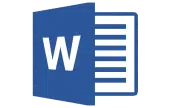Let’s start our guide here by asking you a few questions.
Do you need to get a loan? Or do you need to immigrate, adopt a child, or just secure a job opportunity?
We understand that, at first glance, nothing would tie any of these aspects together. But the truth is, they all share one key document: an employment verification letter.
It’s a little document that provides critical data to any organization that requires it. Oddly, though, not many people know what it is or what it includes.
That’s why in today’s guide, we’ll walk you through everything about employment verification letters and how to write one correctly.
What’s an Employment Verification Letter?
An employment verification letter (EVL), or a letter of employment, is a formal document that states your current or previous employment details.
Depending on the organization requesting this document, the focus may be on your job title, salary, duties, or length of employment.
You can present it along with a letter of introduction and your resume if needed.
One thing to note, though, is that this letter differs from an employment authorization document (EAD). The first provides information about your job history, while the latter proves you can legally work in the U.S.A.
Why Do People Need an Employment Verification Letter?
There are many reasons why an individual may require an employment verification letter. You see, it includes salary, hiring date, position, and, if it happened, termination date and reasons. As such, people need it in the following situations:
During a Job Search
When it comes to new jobs, an EVL provides your future employer with the necessary data about you as an employee.
It confirms the list of experiences and qualifications you’ve listed in your resume and supports your claims. Essentially, it helps build trust with future employers without the need for any personality tests or various interviews.
For Immigration Paperwork
If you’re moving to a different country or applying for citizenship, there’s a chance the hosting government will ask for this paper.
To them, this can prove you’re not a liability and can support yourself—and your family—during your stay. Thus, it helps them make an informed decision about your application.
When Borrowing Money
Applying for a loan, mortgage, or credit often involves questions about your financial income and job stability.
An EVL answers both these questions, which helps the loaners assess your ability to repay the loan.
When Adopting a Child
Starting a family means you need to be ready to take on the responsibilities of caring for a child. One of those responsibilities is financial security.
That’s why adopting agencies may require an EVL to determine your general stability and if it’ll allow you to care for a child.
What Does an Employment Verification Letter Include?
So far, we’ve covered the basics of an EVL and why people may need it. But what exactly does it include?
Here’s an outline of what an employment verification letter should include:
1. Employee’s Name
To avoid any confusion, the EVL should include the employee’s full name written like any other official document. This means the official must write the first, middle, if applicable, and last names.
Do note that this is one of the first things any organization will look for. Hence, you’ll need to ensure it’s written correctly—you’d be surprised by how many people misspell the easiest of names!
2. Company’s Name
The next name to include down after your own is your company’s. This is another trap that many people tend to fall into.
You could work for years in a particular company without realizing its name is spelled differently.
This is mainly to do with a phenomenon called “The Mandela Effect.” You think something is spelled a certain way because that’s just how you remember it.
Unfortunately, that could lead to little problems, including this one. The best way to avoid this problem is by checking your company’s media accounts or official website.
3. Employee’s Position
This is one of the most critical factors in the EVL, as it’s one of the first elements future employers look for.
The employee’s positions confirm their responsibilities and what they can offer to their potential positions.
Most importantly, it explains their expertise and how much they’ve achieved in their chosen career. Of course, this helps future employers determine whether they’re suitable for the position or not.
4. Dates of Employment
While the date of employment seems trivial compared to the other items here, it actually plays a big part in securing a job or loan.
How, you might wonder? It’s because of two factors:
- The employment date reveals how much the employee worked, their general experience level, and how long it took him to reach his current position.
- It shows how stable the employee’s work history is.
With this data, any future employee or loaner can assess whether you’re reliable or not.
5. Work Address
The work address’ importance lies in the fact that the reader can use it to verify the employer’s legitimacy. Simply put, it helps support the data you provide.
They can also use it to determine how committed the employee is to the job. That’s because the address usually reflects how far the employer is willing to travel for his job.
6. Pay Rate
The employer can put the pay rate as hourly, monthly, or annually as long as it tells the reader how much the employee makes. Of course, it can reflect the current or previous salary.
This tidbit of information is what immigration or child adoption agencies look for. It shows your financial situation and how you handle your money.
7. Pay Frequency
Lastly, the pay frequency must show how often the applicant gets paid. Is it bi-weekly, semi-monthly, or monthly, for example?
This is another financial element that helps officials understand your financial standing.
Who Writes the Employment Verification Letter?
Generally, the employer is the one who writes their employees’ verification letters. However, an authorized company representative can also write it.
This representative can be someone from human resources, the manager, the business owner, or someone else with authority to do so.
It all depends on the company structure and how it operates. So long as the authorized representative has access to the employees’ records and data, they can do it.
What Should You Provide for an Employment Verification Letter?
To acquire your employment verification letter, you must provide a couple of items to your company. This includes the following:
Paystubs
Also known as a payslip, a paystub is a document that details your earnings and any deductions to your salary. These deductions can include anything from taxes and insurance to your retirement plan.
By providing your company with your paystub, you help them verify your income and pay frequency. This guarantees that the letter accurately reflects your financial situation.
References
References are the individuals who can vouch for your work experience, performance, and personality. Thankfully, there isn’t a set of rules about who can be your reference.
As long as they’ve worked with you, you’re set to go! This includes former managers, colleagues, or supervisors.
Some people like to include a “reference available upon request” subtitle to help organize the paper a bit. This isn’t necessary, though, but it can be helpful if you have loads of references.
Contracts
Lastly, you need to provide your company with a copy of your contract. This is the agreement between you and your employer that states your position, terms and conditions, responsibilities, and salary.
Basically, it’s another way to help the authoritative figure confirm and verify your data.
How to Write an Employment Verification Letter?
Thankfully, writing an effective employment verification letter is easier than you think. All you have to do is follow the outline below:
1. Start With an Employment Verification Letter Template
The first step in creating an EVL is following a template. This guarantees that you write down all the necessary information without forgetting anything.
You can use some of the online templates or create one yourself based on reliable examples. Though, if you decide to outline your template, include all the previously mentioned information.
2. Fill in the Necessary Information
Once you have the template on hand, it’s time to fill in the information. To make things easier, keep the necessary papers next to you.
This includes the paystub, contract, company information, and any other document that can help you.
Next, start with the tricky details! This means the numbers first—date of employment, salary, pay frequency—leaving the names to the end to avoid making mistakes.
3. Edit for Clarity and Accuracy
When you’ve filled in all the information, rest and leave the papers for an hour or so. We know it sounds strange, but this is really helpful!
When you return to work on it, you’ll be able to see more clearly, which will help you spot any mistakes. You’ll notice any punctuation or grammar mistakes as well as information-related ones.
Please note that you must review the document more than once to ensure there aren’t any mistakes—you don’t want the employee to receive a rejection letter after all!
4. Print on Company Letterhead
To give the employment verification letter an official look, print it on your company’s letterhead.
Not only does that add an extra layer of credibility, but it also makes it easier to verify the company.
That’s because letterheads usually include the company’s logo, name, and contact information.
5. Sign and Date
The final step is to sign and date the letter before sending it to your employee. The signature must be clear and match the company’s official documents.
As for the date, it should reflect when the employer wrote the letter to ensure everything is up to date.
Frequently Asked Questions
Now that you know everything about employment verification letters, here are a couple of the most popular questions:
What is the Difference Between an Offer Letter and an Employment Verification Letter?
There are various differences between an offer letter and an EVL, including function, recipient, and timing.
To start, the function of an offer letter is to serve as a formal agreement between the employer and the potential employee.
It outlines the terms and conditions of the new job and provides all the necessary details. The EVL, on the other hand, acts as proof of employment for various purposes, such as loans and immigration.
Next, the recipient of the offer letter is usually the employee, and it’s issued during the hiring process.
In contrast, the recipient of an EVL could be anyone from potential employees, government agencies, or loaners. Also, it’s issued upon request during or after employment.
What is an Employment Verification Letter H1B?
The H1B is a type of visa that U.S. employers need to hire any foreign worker.
Hence, an employment verification letter for an H1B is a specific type of EVL tailored specifically for H1B visa applicants.
The letter should include all the required data, like the employee’s name, ID number, and salary.
Quick Recap
Now that you’re here, what do you think about our employment verification letter guide? If you liked it, please share it with friends and family, as they might need to know about EVLs!
If you have any questions, you can leave them in the comments, and we’ll get back to you as soon as possible.
To give you a quick recap of our guide, an employment verification letter is a document that details your employment history. It includes your name, company name, how long you worked, salary, and so much more.
You might need this document if you’re applying for a new job, loan, visa, or even child adoption.









